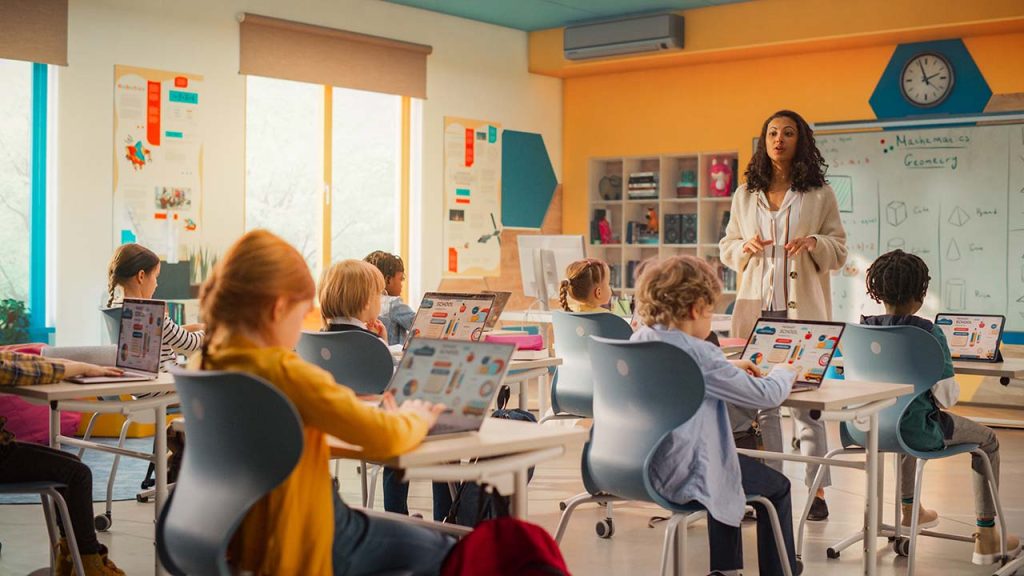
Do You Know What Superintendents Actually Do? 8 District Leaders Describe Their Jobs
They are among the most influential and recognizable people in public school systems, but superintendents’ jobs are also among the least studied and understood positions in the education field.
Superintendents are at the helm of—and often the face of—local districts, and they are tasked with implementing policies that guide instruction, discipline, safety, and more. Superintendents are generally the highest-paid employees in their districts, a perennial topic of debate, and their jobs have recently come into the spotlight as political debates about how race and LGBTQ issues are taught in schools have taken center stage.
Their vision for schools shape students’ educational experiences, staff members’ working conditions, and the community’s relationship with the district and level of confidence in the work it’s doing.
But concrete data about the people leading the nation’s more than 13,000 public school districts has traditionally been lacking, and many would be hard pressed to explain these important jobs.
So, Education Week asked eight superintendents to describe their jobs in two sentences or less. Their responses are below and have been lightly edited for grammar and clarity.
My primary role is to support the continuous growth of my staff so they can be successful educators. Rural school leaders are actively engaged in their communities while promoting the district. As rural school leaders, we wear multiple hats and know how to step in to serve food, unplug toilets, and drive buses. We do it all.
—Deron Stender | Creston, Iowa
As the superintendent, my job is to work with the school board to understand the vision for schools that meets our community’s needs and expectations, and work with staff to make that vision reality for our students.
—Heidi Sipe | Umatilla, Ore.
The superintendent is the CEO of the educational organization and is directly responsible for the strategic vision of the district along with the supervision and evaluation of all educational programs and personnel. In addition, the superintendent serves as a community leader who connects the strategic vision of the school district to the larger community’s mission, vision, and values.
—Martha Salazar-Zamora | Tomball, Texas
The superintendent is responsible for ensuring that our students get the best education possible. It is important to ensure our staff have the resources necessary to provide for their students’ education. It is also necessary to provide a safe environment for all.
—Corrina L. Guardipee-Hall | Browning, Mont.
We provide guidance about academics, construction, contracts, custodial services, data analysis, extracurricular activities, facility maintenance, finances, meal operations, personnel, security, and transportation in order to comply with laws, regulations, and policy by building relationships for the purpose of the organization providing children in the community the opportunity to reach their personal potential.
Think of it as batting practice with unlimited, multiple pitching machines: Whatever kind of pitch is coming, you want to have a good successful contact. The reality is that you do the best you can with the information you have at the time—some are swings and misses, others a homerun.
—Lee Ann Wentzel | Folsom, Pa.
I always describe the job to new superintendents as boiling down to resource management. You need to make sure that you are maximizing the available resources: finances, time, personnel, etc., in order to positively impact the learning of the students entrusted to your care.
—Tobin Novasio | Hardin, Mont.
My job is to collaborate with and gather clear direction from the school board, translate that into marching orders for our district staff, and combine that with as many resources as possible so that we can do the best we can for our students.
—David Law | Minnetonka, Minn.
Superintendents are the primary instructional leaders—they oversee policy implementation, they develop and maintain financial resources to support the organization, they make sure that buildings provide students with safe, inclusive learning environments, they are advocates, confidants, communicators, and experts in whatever role their district and students need them to fulfill.
In order to do all of this, superintendents are the leaders’ leader and must surround themselves with capable professionals while communicating expectations, investing in professional learning, and providing the resources the organization needs to perform their ultimate task in providing the best possible education to all the students we serve.
—Heather Perry | Gorham, Maine
Dig Deeper With Our Longreads
Newsletter Sign up to get our best longform features, investigations, and thought-provoking essays, in your inbox every Sunday.
The MEN was founded by John Huber in the fall of 2020. It was founded to provide a platform for expert opinion and commentary on current issues that directly or indirectly affect education. All opinions are valued and accepted providing they are expressed in a professional manner. The Maryland Education Network consists of Blogs, Videos, and other interaction among the K-12 community.








